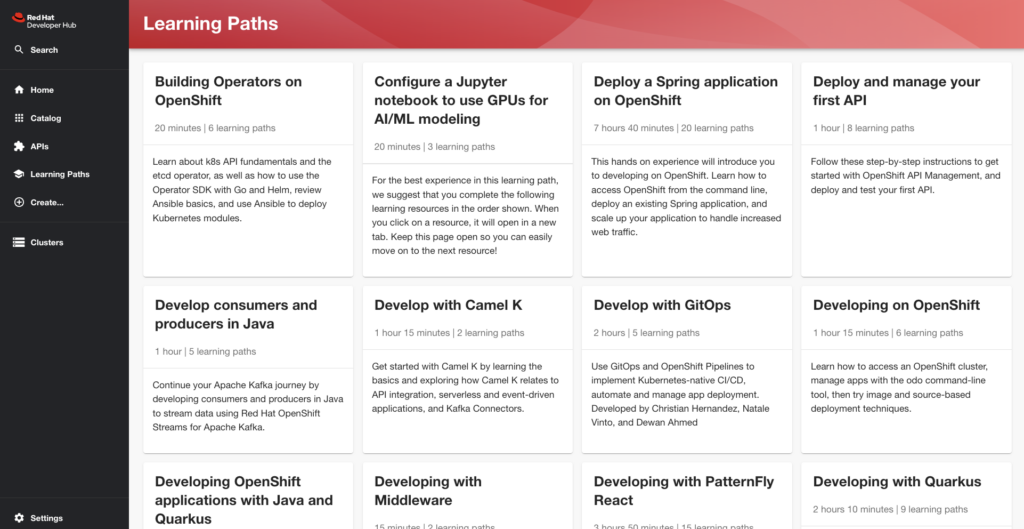Red Hat today made generally available a developer hub based on the open source Backstage platform originally developed by Spotify.
Balaji Sivasubramanian, the senior director of product management for developer tools at Red Hat, said Red Hat Developer Hub provides IT organizations with an extensible instance of Backstage for Kubernetes environments to improve developer productivity.
The overall goal is to make it simpler for organizations to embrace platform engineering as a methodology for managing DevOps workflows at scale by deploying an internal developer platform (IDP), he added.
That approach provides the added benefit of making it easier to onboard new developers to a project, noted Sivasubramanian. Without an IDP, it would take the average organization several weeks to provide developers with the tools they need to be productive, he noted.
Backstage today is being advanced under the auspices of the Cloud Native Computing Foundation (CNCF). The Red Hat Developer Hub adds a self-service dashboard, standardized software templates that can be invoked via a graphical interface or command line interface (CLI), role-based access control (RBAC) and ongoing support. It is also designed to be integrated with Red Hat OpenShift, an application development and deployment platform for cloud-native applications based on Kubernetes.
Red Hat Developer Hub also includes support for a dynamic plug-in capability that makes it simpler to install, update and remove plug-ins without having to rebuild the Backstage environment. Red Hat has already created several technology plug-ins that have been contributed to the Backstage community. The IDP is also capable of running and accommodating plug-ins developed by the Backstage community.
There is more focus than ever on developer productivity these days largely because, as organizations realize how dependent they are on software to drive revenue and improve profitability, the pace at which software is developed is now having a much greater material impact. The issue is that cloud-native applications are complex to build and deploy, so IT teams are embracing IDPs and platform engineering as part of an effort to simplify software engineering at scale.
The challenge is developers want to be able to add tools as they best see fit, so IT teams need to find a way to strike a balance between reducing the cognitive load developers encounter today and what could become an overly heavy-handed approach to centralizing DevOps workflows. If talented developers start heading for the exits because they don’t like the experience being provided, IT leaders will find it difficult to replace them.
In general, the hope is that IDPs, when used within the context of platform engineering, will give developers more time to focus on writing business logic. However, application development is as much art as it is science. Just because developers have more time it does not necessarily follow that the insights and inspiration needed to write code will automatically ensue. IDPs and platform engineering, at the very least, however, create the opportunity for developers to write more business logic faster. The degree to which that occurs will naturally vary from one organization to the next.




